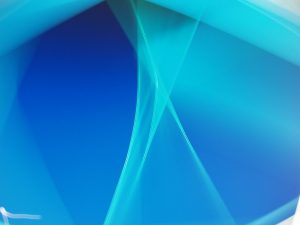 What is blue light?
What is blue light?
Blue light is a light spectrum, emitted by the sun. It also emitted by technology devices and therefore has fallen into disrepute. First of all, blue light in the evening (typical with TV/Computer/Cellular phones) is not healthful. It is especially relevant that it inhibits melatonin, which is needed for sound sleep.[1] [2] Hence, we are warned about the deleterious effects of using our phone, tablets, TVs and computer late at night.
Is blue light both good and bad?
In addition, melatonin has anti-cancer properties.[3] However, while blue light exposure reduces evening melatonin (bad), it also inhibits melatonin production during the day (good). Why? Because melatonin lets the body relax and sleep. That is the last thing we want by day, because we should be alert and working. Blue light, while reducing melatonin at night, is wonderful by day. Another positive effect is its ability to call T-cells (important immune-system cells) into play.[4] And of course, T-cells are soldiers that can destroy noxious, invading microorganisms.
What more can blue light do?
In addition, full–body exposure to blue light decreases blood pressure, lessens arterial stiffness, and improves endothelial function.[5]
Another attribute is its ability to cause subdermal fat tissue to decrease in size.[6] In other words, it can cause fat loss. Thus, the action of sunlight may help one to stay slim or become slim. The researchers showed that daily exposure of fat cells to blue light resulted in decreased lipid droplet size and increased fat breakdown rate. The researchers had been doing research on light and diabetes, and they serendipitously found that the light could be an asset in maintaining (or producing) a slim body.
Set your circadian rhythm.
Blue light also helps to reset the circadian rhythm of the body.[7] In conclusion, remember that blue light, which is particularly beneficial during the daytime, is disruptive at night and inhibits melatonin, needed for sleep. Therefore, get out in the early morning and get your share of blue light throughout the day. And when it becomes dark, go to bed early and avoid blue light. Avoid sunburn when you are soaking up the sun. Simply cover up when you have had enough, and avoid sunscreens, which have been shown to actually increase sunburning.
Learn more!
To learn all the facts about the healthful effects of sunlight, read my book, Embrace the Sun, available at Amazon. https://www.amazon.com/Embrace-Sun-Marc-B-Sorenson/dp/069207600X 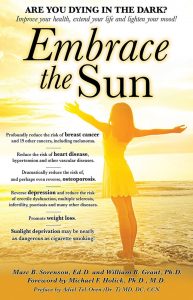
[1] Vandewalle G, Collignon O, Hull J.T, Daneault V, Albouy G, Lepore F, et al. Blue light stimulates cognitive brain activity in visually blind individuals. J Cogn Neurosci. 2013 Dec;25(12):2072.
[2] Knufinke M, Fittkau-Koch L, Møst EIS, Kompier MAJ, Nieuwenhuys A. Restricting short-wavelength light in the evening to improve sleep in recreational athletes – A pilot study. Eur J Sport Sci. 2018 Nov 14:1-8. [Epub ahead of print].
[3] de Almeida Chuffa LG, Seiva FRF, Cucielo MS, Silveira HS, Reiter RJ, Lupi LA. Mitochondrial functions and melatonin: a tour of the reproductive cancers. Cell Mol Life Sci. 2018 Nov 14 [Epub ahead of print].
[4] Phan TX, Jaruga B, Pingle SC, Bandyopadhyay BC, Ahern GP. Intrinsic Photosensitivity Enhances Motility of T Lymphocytes. Sci Rep. 2016 Dec 20;6:39479.
[5] Stern M, Broja M, Sansone R, Gröne M, Skene SS, Liebmann J. et al.
[6] Ondrusova K, Fatehi M, Barr A, Czarnecka Z, Long W, et al.. Subcutaneous white adipocytes express a light sensitive signaling pathway mediated via a melanopsin/TRPC channel axis. Scientific Reports 2017 November 27;7:16332.
[7] Bonmati-Carrion MA, Arguelles-Prieto R, Martinez-Madrid MJ, Reiter R, Hardeland R, Rol MA, Madrid JA. Protecting the melatonin rhythm through circadian healthy light exposure. Int J Mol Sci. 2014 Dec 17;15(12):23448-500.
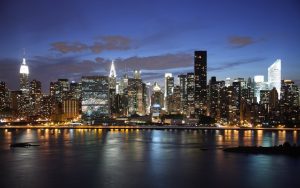 An innate need for sunlight exists within the human body and soul.
An innate need for sunlight exists within the human body and soul.
First of all, consider the opening line of a recent article in the New York Times: “Let there be light. Please.” And, the article states that people in New York City (NYC) love to seek apartments with sunlight. It is also especially relevant that such apartments demand premium prices. But sun seekers have a problem because of the continuous building of new high rises. Consequently, they must look at the city’s future building plans before they fulfill their innate need for sunlight. This is because new buildings may be built that block whatever sunlight is available.
Problems encountered in fulfilling the innate need for sunlight in NYC.
Therefore, it is a difficult situation to satisfy the innate need for sunlight in NYC. And no wonder people in the southern states have lower cancer rates, despite their atrocious eating habits.[1] Why? Because they have one of the best cancer fighters: sunlight.
An example of the rather impressive anti-cancer power of sunlight: Iranian research demonstrated the innate need for sunlight. Women who avoided sun exposure had 10 times the breast cancer risk.[2] That is, of course, when they were compared to women who were able to obtain regular sunlight. This is because the innate need for sunlight was being ignored among women forced to avoid sun.
What other diseases are manifest when we ignore our innate need for sunlight?
Lack of sun exposure increases the risk of 16 other cancers, heart disease, vitamin D deficiency, multiple sclerosis, hip fractures, depression and myriad others. (See my book, Embrace the Sun, for a full discussion.) The innate need for sunlight manifests itself in higher rates of these “killer” diseases worldwide.
According to the NYT article, “there are those who view light as an elemental need, one that trumps everything else, including location, closets, level floors, an elevator, a doorman and proximity to Trader Joe’s.” Obviously, the people recognize, at a visceral level, their innate need for sunlight.
Do the Chinese have an innate need for sunlight?
Another article also emphasized the innate need for sunlight.[3] And, this one came from halfway around the world, in Shanghai. It seems like the Chinese should know about sun healing, since their experience in healing goes back thousands of years. Hence, they would not need to read this article to appreciate the innate need for sunlight. A real-estate developer there had to pay a family the equivalent of $15,650.00 for robbing them of their sun. One of the developer’s skyscrapers exceeded the legal height, and partially blocked the sun to their apartment. Consequently, this prevented the family from obtaining their government-mandated sun allotment. The allotment was two hours per day, and the skyscraper allowed only 1-2 hours of sun.
A judge who understands the innate need for sunlight
The judge in the case said, “We can’t live without sunshine” and told the developers they had to respect the rights of the people to enjoy the sun. Due to this judge’s understanding of the innate need for sunlight, justice was done.
Why is the innate need for sunlight not recognized in the U.S? Good question!
The Chinese experience is in stark contrast with the US. First of all, in the 1990s, a president of the American Academy of Dermatology (AAD) made this statement. “In some vision as I grow older I see us moving to more shelters and perhaps underground living because of these hazards” (meaning sun exposure).[4] Also, she stated that melanoma would cause more cancer deaths than any other cancer by about 2010. Since it is now 2018, and we are not yet living underground, she was ridiculously wrong. In addition, melanoma is nowhere near the top of the cancer-deaths charts. It kills far less people than most major cancers like lung, breast, colon and prostate. However, it will probably increase in incidence as more people are convinced by the ADD to avoid their innate need for sunlight.
When it comes to the innate need for sunlight, the Chinese have more smarts!
It appears that the Chinese are a whole lot smarter than the AAD regarding the innate need for sunlight! Therefore, the AAD’s insistence on sun avoidance is likely to destroy public health. And, soaking up some safe, unobstructed, regular sunlight will enhance health. The AAD’s insistence on sun avoidance is much more likely to destroy the health of the American public than soaking up some unobstructed sunshine. So please, PLEASE enjoy some safe, non-burning sun, winter and summer, while you improve your health! And remember that sunscreens inhibit 95% of vitamin D production. Therefore, when you have had enough sun exposure, cover up with clothing or seek shade. Those who use sunscreens have far more sunburns than those who do not use it.[5] Think about it, and read my book, Embrace the Sun so that you can be comfortable while attending to your innate need for sunlight. https://www.amazon.com/Embrace-Sun-Marc-B-Sorenson/dp/069207600X 
[1] Sorenson, M. Vitamin D3 and Solar Power. Chapter 8. 2008.
[2] Bidgoli SA, Azarshab H. Role of vitamin D deficiency and lack of sun exposure in the incidence of premenopausal breast cancer: a case control study in Sabzevar, Iran. Asian Pac J Cancer Prev. 2014;15(8):3391-6.
[3] http://www.shanghaidaily.com/national/Sun-suit-Family-wins-payout/shdaily.shtml
[4] Dr. Wilma Bergfeld, then-president of the American Academy of Dermatology at Derm Update, the AAD’s 1996 annual media day, Nov. 13, 1996.
[5] Silva ESD, Tavares R, Paulitsch FDS, Zhang L. Use of sunscreen and risk of melanoma and non-melanoma skin cancer: a systematic review and meta-analysis. Eur J Dermatol. 2018 Apr 1;28(2):186-201.
Vitamin D levels: sufficient for winter? By Marc Sorenson, EdD
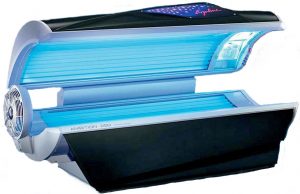 Vitamin D levels and sunshine are exceptionally important to human health, and therefore we should be aware of vitamin D science. The Vitamin D Society of Canada is always at the forefront of the research on vitamin D levels and sunlight. And, they deliver press releases to keep people from Canada (and the world) apprised of new and important findings. Hence, I would like to comment on the salient points of their latest release. As I do so, it is especially relevant to note that vitamin D levels are surrogate measures for sun exposure.
Vitamin D levels and sunshine are exceptionally important to human health, and therefore we should be aware of vitamin D science. The Vitamin D Society of Canada is always at the forefront of the research on vitamin D levels and sunlight. And, they deliver press releases to keep people from Canada (and the world) apprised of new and important findings. Hence, I would like to comment on the salient points of their latest release. As I do so, it is especially relevant to note that vitamin D levels are surrogate measures for sun exposure.
The relationship of vitamin D to sun exposure
Ninety percent of vitamin D levels in the blood is due to sun exposure.[1] The UVB portion of sunlight stimulates vitamin D production in skin. Therefore, a UVB light source, which produces vitamin D levels, is the best source in winter. Remember also that the press release information is true for the world, not just Canada.
Salient points about vitamin D levels and sunlight: breast cancer
- First of all, consider a breast-cancer study published in the scientific journal, Plos One.[2] It showed that women with the highest vitamin D levels had a reduced breast-cancer risk. Most noteworthy, women with levels > 60 ng/ml had 82% reduced risk, compared to those with levels < 20 ng/ml. Furthermore, there was a dose-response decrease. For each increase in vitamin D levels, there was a concomitant decrease is breast-cancer risk.
Vitamin D levels and Breast Cancer
- Since we mentioned that vitamin D is produced by sun exposure, we should mention an Iranian sunlight-breast cancer study. In Iran, among women who totally avoid sun exposure, there is a 10-fold increase breast cancer risk.[3] That is an especially relevant fact for women who believe they should avoid the sun! And remember, melanoma is also reduced in those who are regularly exposed to sunlight.[4]
Another Vitamin D levels- and sunlight-deficiency cancer
- It seems like if breast cancer is reduced by high vitamin D levels, the same relationship could exist for other cancers. Hence, the press release mentioned colorectal cancer as the second disease associated to low vitamin D levels or low sun exposure. And, it mentioned another important piece of research.[5] Participants with vitamin D levels below 12 ng/ml had a 31% higher risk of colorectal cancer. Those with levels above 30 ng/ml had a 27% reduced risk.
Other disorders associated with vitamin D levels
In addition, the press release mentions four other disorders where higher vitamin D levels reduce risk or improve the condition. The disorders: diabetes (81% reduced risk), multiple sclerosis (45% reduced risk), preterm birth (62% reduced risk) and poor cognitive function. As to cognitive function, those who spent the most time outdoors with the least sun protection, had better cognitive function.
Finally, this is an excellent press release regarding vitamin D levels and sunlight. I strongly suggest you read it. http://www.vitamindsociety.org/press_release.php?id=60 Also, see the previous blog regarding the vitamin D Society and vitamin D levels: http://sunlightinstitute.org/vitamin-d-canada-warning/
Vitamin D and sunlight are sine qua nons for health, and so are proper nutritional habits. Happy health! Be sure to read my book, Embrace the Sun, available at Amazon. 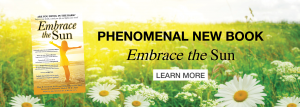
[1] Reichrath J. The challenge resulting from positive and negative effects of sun: how much solar UV exposure is appropriate to balance between risks of vitamin D deficiency and skin cancer? Prog Biophys Mol Biol 2006;92(1):9-16
[2] McDonnell SL, Baggerly CA, French CB, Baggerly LL, Garland CF, Gorham ED, Hollis BW, Trump DL, Lappe JM. Breast cancer risk markedly lower with serum 25-hydroxyvitamin D concentrations ≥60 vs <20 ng/ml (150 vs 50 nmol/L): Pooled analysis of two randomized trials and a prospective cohort. PLoS One. 2018 Jun 15;13(6).
[3] Bidgoli SA, Azarshab H. Role of vitamin D deficiency and lack of sun exposure in the incidence of premenopausal breast cancer: a case control study in Sabzevar, Iran. Asian Pac J Cancer Prev. 2014;15(8):3391-6.
[4] Vågero D, Ringbäck G, Kiviranta H. Melanoma and other tumors of the skin among office, other indoor and outdoor workers in Sweden 1961–1979. Brit J Cancer 1986;53:507–12.
[5] McCullough ML, Zoltick ES, Weinstein SJ, Fedirko V, Wang M, et al. Circulating Vitamin D and Colorectal Cancer Risk: An International Pooling Project of 17 Cohorts. J Natl Cancer Inst. 2018 Jun 14.
 Vitamin D is essential in Canada (and Ely). By Marc Sorenson, EdD.
Vitamin D is essential in Canada (and Ely). By Marc Sorenson, EdD.
I just received an excellent press release from my friend Perry Holman, who is touting the Canadian Vitamin D Day. Perry is the Executive Director of the Vitamin D Society. The Society is alarmed about the lack of sunlight and vitamin D production during the long Canadian winter. The points made in the press release, however, are also relevant for all areas of the U.S. that have long, cold winters. This would include Ely, Nevada, my high-school hangout. Therefore, this blog contains a couple of editorial comments regarding Ely and other points in the U.S. [Ely, Minnesota would certainly need this advice too.]
The current lack of vitamin D is due to of the position of the sun in the winter sky. All of the UVB light that stimulates vitamin D production (and many other essential photoproducts) is filtered out when the sun drops too close to the southern horizon.
Here are a few of the salient points made in the release:
- Vitamin D levels plummet this time of year, since the sun can no longer make vitamin D. [This is also true of Ely, NV, where most vitamin D production ceases on about October 1. It starts up again about March 1.]
- 93% of Canadians are vitamin D deficient. [For Ely, the number is probably closer to 50%, but for the Northern states in the U.S., the number is probably closer to 80%.
- This deficiency leads to 23,000 premature deaths yearly in Canada. See this link: https://www.ncbi.nlm.nih.gov/pmc/articles/PMC5129897/pdf/kder-08-01-1248324.pdf
- There are two primary sources of vitamin D Canadians should consider during the winter – artificial UVB exposure and vitamin D3 supplements.
- Artificial UVB exposure can be a surrogate for summer sunshine and is obtained from most sunbeds or through special UVB lamps designed for home use.
- A recent Canadian study found that regular use of sunbeds with UVB similar to outdoor summer sun significantly raised participants’ vitamin D levels to the optimal range. See this link: https://www.ncbi.nlm.nih.gov/pmc/articles/PMC5821157/
- Perry Holman states: “The current health policy limiting sun exposure may be causing more deaths and disease than its preventing. Vitamin D levels have been dropping and more people are becoming vitamin D deficient in Canada. We need a change in direction to encourage people to get moderate non-burning sun exposure to prevent vitamin D deficiency and reduce the risk of serious diseases.” [My comment here is that the research in my book shows the following: for every single death caused by diseases associated with sun exposure, there are approximately 328 deaths caused by diseases associated with sun deprivation.]
Whether you live in Canada, Ely, Nevada, or anywhere else where you either avoid the sun or have no availability of vitamin D-producing sunlight during the colder seasons, you should read this press release. http://www.vitamindsociety.org/press_release.php?id=59
Happy sunning, and as another of my Canadian friends says, “Have a D-lightful day!” And, read my new book, Embrace the Sun, available at Amazon: https://www.amazon.com/Embrace-Sun-Marc-B-Sorenson/dp/069207600X/ref=sr_1_1?ie=UTF8&qid=1540903899&sr=8-1&keywords=embrace+the+sun+sorenson
Mood is essential to a happy life and wellbeing. By Marc Sorenson, EdD
Mood (a good mood) is critical to optimal living, and those who work in natural light experience improvement. In addition, a good mood leads to better performance, behavior and psychological health.  Furthermore, very few things improve wellbeing like arising early in the morning and walking outside on a sunny day: Our attitude improves too, and our serotonin and endorphin levels increase. Consequently, there is an almost immediate feeling of exhilaration. So, we become happier and less confrontational, and our minds seem to click on all cylinders. This mood change is all due to the morning sun exposure. Does midday sun exposure also help?
Furthermore, very few things improve wellbeing like arising early in the morning and walking outside on a sunny day: Our attitude improves too, and our serotonin and endorphin levels increase. Consequently, there is an almost immediate feeling of exhilaration. So, we become happier and less confrontational, and our minds seem to click on all cylinders. This mood change is all due to the morning sun exposure. Does midday sun exposure also help?
Mood and midday sunlight
Later on, around midday, we produce large quantities of vitamin D, and our nitric oxide levels increase. That is, of course, if we are fortunate enough to safely sunbathe (with a lot of skin exposed). As a result, we experience a delicious feeling of relaxation and a lowering of blood pressure as the cares of the day melt away. Therefore, mood is again enhanced.
Mood and sun robbery
Regrettably, due to various factors, most of us live in a society robbed of the sun. We are confined to artificially lighted buildings and poor little cubicles and our mood is crushed. These little cubicles, of course, seem like prison cells that won’t allow our happiness to manifest itself.
Consequently, concerned scientists are recognizing that modern humans suffer from artificial, insufficient light in their lives. So these scientists are advocating a return to natural light. One of their studies on the subject of light and mood is most noteworthy. They, due to their concern about light availability measured the impact of windows and daylight on mood. They studied the physiological, psychological and behavioral health of working nurses.[1] First of all, they used biological measurements, behavioral mapping and data analysis in a nursing unit of two wards. While both wards exhibited similar conditions, one ward had more windows and more natural lighting than the other.
Impressive mood results:
As a result, in the ward with more windows and natural light, the nurses had better health. They had lower blood pressure and higher body temperature, less sleepiness and a better mood. Communication and laughter also increased. Heart rates were shown to be lower with greater exposure to light, and caffeine intake was reduced as well. In conclusion, mood was improved, as was performance. Rana Zedeh, the lead researcher of that study, made the following statement:[2] “Research has shown a range of different outcomes are impacted by sun, including regulation of the circadian rhythm, shorter length of stay for patients, reduced perception of pain for patients, and reduced anxiety and agitation among elderly patients with dementia. Improved outcomes for patients also help staff manage their patients better.”
Change the environment, change the mood.
Finally, one can only imagine the potential benefits that could be realized if unencumbered sun rays are allowed. Vitamin D production would increase, and it is likely that patients as well as nurses would improve their health.
Hence, Dr. Zadeh also made this declaration: “Intelligently designed clinical workspaces could lead to higher safety and quality levels… By default, when we think of a healthcare workspace, we may think of a large, deep building with no windows for staff, little access to greenery or outdoors, an institutional feel, complex way-finding, and monotonous color and lighting. Knowing how the human brain receives stimuli from the environment and constantly changes neural hormonal responses controlling cognitive performance and alertness, we might be able to improve outcomes by creating more vigilant and restorative elements in environments.”[3] The translation is, “elevate your mood by getting out of the little dark boxes and back into the sun.”
 How does the sun work to improve mood?
How does the sun work to improve mood?
First of all, what does the sun do to relieve “the blues?” The answer lies in a chemical responsible for transmitting impulses between nerve cells. This “neurotransmitter,” serotonin, is a natural “upper,” working in synchronization with the natural “downer,” melatonin. So, when we awake to sunshine, light enters the eye and stimulates serotonin production. Because of this reaction, sunlight can dramatically increase serotonin levels in the brain and immediately improve mood.
Dr. Gavin Lambert and his colleagues in Australia measured serotonin levels in response to varying degrees of bright light. [4] To do so, they drew blood samples from the internal jugular veins of 101 men and compared the serotonin concentrations of the blood to weather conditions and seasons. The remarkable results: Men who were measured on a bright day produced eight times more serotonin. That is, compared to those who were measured on a dismal day. Of course, the mood was improved due to sunlight.
Get your regular, non-burning sun exposure and enhance your good mood!
[1] Zadeh RS, Shepley MM, Williams G, Chung SS. The impact of windows and daylight on acute-care nurses’ physiological, psychological, and behavioral health. HERD 2014 Summer;7(4):35-61.
[2] Katy Mena-Berkley. Mood: the Science of Letting the Sunshine In. MD News
[3] Katy Mena-Berkley. Mood: the Science of Letting the Sunshine In. MD News
[4] Lambert GW, Reid C, Kaye DM, Jennings GL, Esler MD. Effect of sun and season on serotonin turnover in the brain. Lancet. 2002 Dec 7;360(9348):1840-2.
Multiple sclerosis is a sunlight-deficiency disease. Another reason to embrace the sun. By Marc Sorenson, EdD
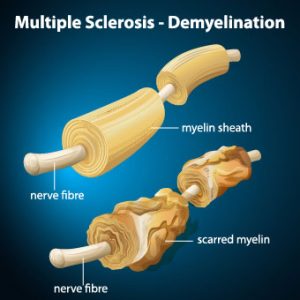 First of all, multiple sclerosis is a terrible autoimmune disease in which immune cells attack myelin, the protective nerve cover.[1], [2] Hence, this process, known as demyelination, leaves the nerves bare and susceptible to “short circuiting.” This results in a debilitating disease which is often characterized by severe neural and muscular impairments. It may also result in sensory losses, bladder dysfunction, pain and visual problems due to nerve damage.
First of all, multiple sclerosis is a terrible autoimmune disease in which immune cells attack myelin, the protective nerve cover.[1], [2] Hence, this process, known as demyelination, leaves the nerves bare and susceptible to “short circuiting.” This results in a debilitating disease which is often characterized by severe neural and muscular impairments. It may also result in sensory losses, bladder dysfunction, pain and visual problems due to nerve damage.
MS is a big problem!
And recent findings, from National MS Society, estimate 1 million people in the United States have multiple sclerosis. Furthermore, this is more double the last reported number, and the first national research on multiple sclerosis prevalence since 1975. Consequently, it is estimated that about 200 new cases are diagnosed each week in the United States.[3]
Multiple sclerosis and sun exposure: What does new research say?
While no one disputes the horror of an increasing MS rate, a new study reiterates the vital need for sun exposure to prevent MS. Also, we are not surprised about the latest research. Why? Because the new study is simply a reiteration of myriad research papers and opinions showing that more sunlight reduces the risk.
In this research, 151 MS patients defined their previous lifetime sun exposure in the different seasons by questionnaire. In addition, they were compared to 235 non-patients who answered identical questionnaires.[1] As a result, those living in high-UVB areas experienced a 45% lower risk of multiple sclerosis. Living in those areas at ages 5 to 15 years also was associated with a reduced risk of 51-52%. UVB, of course, is a spectrum of light that emanates from the sun and causes tanning. In addition, it is used in sunbeds and sun lamps.
The conclusion regarding MS and sunlight.
In conclusion to their research, the authors stated, “Living in high ambient UVB areas during childhood and the years leading up to MS onset was associated with a lower MS risk. High summer sun exposure in high ambient UVB areas was also associated with a reduced risk.”
While this research is impressive, there is a plethora of additional science. Most noteworthy are the studies that follow. And, all show the association of sun exposure to lowered risk of MS.
Multiple sclerosis and the Davenport study
Probably, the most important early study was from 1922 by Dr. Charles Davenport. He wrote a paper entitled, “Multiple Sclerosis from the standpoint of geographic distribution and race.”[2] He analyzed the multiple sclerosis rates of military draftees and compared it to their states of origin. As a result, he showed that the highest rates were found in men who grew up in Michigan, Wisconsin, and the extreme northwest. These areas, of course, have very low sun availability. There were only a few cases of MS among those who grew up in southern states, where sun availability is abundant. In addition, Dr. Davenport also noted that draftees from urban areas, and where sun availability is low, had 50% higher MS rates than those who came from rural areas. Similar studies confirm that relationship. [3],[4] In 1979, assessments of the MS rates of USA military personnel Produced nearly identical results.[5]
Reducing relapse of multiple sclerosis through sunlight and/or vitamin D.
Mowry and colleagues, in correlating serum vitamin D to the rate of disease relapse, have reported the following: For every increase in serum levels of 10 ng/ml [25 nmol/L], there is a 34% decrease in the risk of relapse in young people.[6] Especially relevant, however, is that 90% of serum levels is derived from sun exposure. And, we also know that sun exposure has protective effects on MS beyond vitamin D.[7] Also, in the aforementioned research on vitamin D, high levels may really be surrogate measures for sun exposure. Sunlight and vitamin D are not the same.
More hours of sun equal lower risk of multiple sclerosis.
Most noteworthy, among people living in geographical locations, where there are 3,000 hours of available sun yearly, multiple sclerosis rates are quite low. [8] The same relationship exists when latitudes are correlated with rates of MS: And, The risk of MS in far northern areas is more than 100 times greater than it is in equatorial areas, where sunlight is intense, and the rate of MS approaches zero.[9], [10]
Therefore, for all who would like to prevent MS or reduce its exacerbation, soak up some regular, non-burning, safe sunlight. In conclusion, this is another of the wonderful benefits of our magnificent sun. It seems like a good time to indulge before the winter comes.
Finally, for more information on multiple sclerosis, read my new book, Embrace the Sun, available at Amazon.
References and footnotes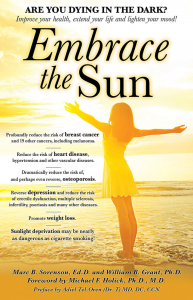
[1] Helen Tremlett, PhD, Feng Zhu, MSc, Alberto Ascherio, MD, DrPH, and Kassandra L. Munger, ScD.
[2] Davenport, C. Multiple Sclerosis from the standpoint of geographic distribution and race. Arch Neurol Psychiatry 1922;8:
[3] Acheson ED, Bachrach CA, Wright FM. Some comments on the relationship of the distribution of multiple sclerosis to altitude, solar radiation and other variables. Acta Psychiat (Scand) 1960;35 (suppl 147):132-47.51-58
[4] Norman JE Jr, Kurtzke JF, Beebe GW. Epidemiology of multiple sclerosis in USA veterans: 2. Latitude, climate, and risk of multiple sclerosis. J Chron Dis 1983;36:551-59
[5] Kurtzke JF, Beebe GW, Norman JE Jr. Epidemiology of multiple sclerosis in USA veterans: 1. Race, sex, and geographic distribution. Neurology 1979;29:1228-35.
[6] Mowry EM, Krupp LB, Milazzo M, Chabas D, Strober JB, Belman AL, McDonald JC, Oksenberg JR, Bacchetti P, Waubant E. Vitamin D status is associated with relapse rate in pediatric-onset MS. Annals of Neurology 2010;10.1002.
[7] Pantazou V, Schluep M, Du Pasquier R. Environmental factors in multiple sclerosis. Presse Med. 2015 ;44(4 Pt 2):e113-20.
[8] Goldberg, P. Multiple sclerosis: vitamin D and calcium as environmental determinants of prevalence (a viewpoint). Part I: sun, dietary factors and epidemiology. Int J Environ Studies 1974;6:19–27.
[9] Alter M, Yamoor M, Harshe M. Multiple sclerosis and nutrition. Arch Neurol l974;31:267-72.
[10] Kurtkze, J. Geography in multiple sclerosis. J Neurol 1977;215:1-26.
[1] Racke, M. Immunopathogenesis of multiple sclerosis. Ann Indian Acad Neurol. 2009 Oct–Dec; 12(4): 215–220.
[2] Markovic-Plese S, McFarland HF. Immunopathogenesis of the multiple sclerosis lesion. Curr Neurol Neurosci Rep 2001;1:257-62
[3] https://www.healthline.com/health/multiple-sclerosis/facts-statistics-infographic#2
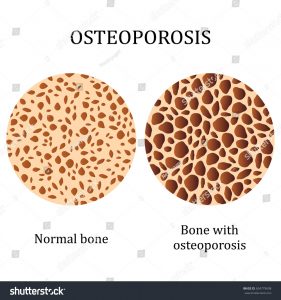 Bone needs vitamin D
Bone needs vitamin D
Bone is deteriorating in our society. Why? Since the year 2000, there has been an 8,300% increase in vitamin D deficiency in children. Insufficient time playing outdoors and/or sunscreen use are the causes of this disaster.[1] It is especially relevant to know that the skin produces vitamin D when it is touched by ultraviolet light (UV). (UV, of course, is a spectrum of sunlight, and of tanning beds and sunlamps.) And, the artificially-lighted environments that most children (and adults) live in, produce no vitamin D for bones. Vitamin D is critical for preventing osteoporosis, a fact that is most noteworthy for this discussion. Without vitamin D, weak bones develop in adults and rickets can develop in children.
Bone strength in children: Rickets is making a comeback.
Rickets is a horrible, disfiguring children’s bone disease. And, before the population became terrified of sun exposure, rickets was at one time considered to be eradicated. Hence, people are surprised to find out that the bones of children are deteriorating. Hence, rickets is making a frightening comeback,[2] it is rearing its ugly head even in sun drenched southern states. That is probably because the children are inside, avoiding the sun and concentrating on their technology. Of course, disuse of the body during this sedentary state also causes loss of calcium, thus causing weakness.
Can “sun supplementation” stop or reverse bone loss?
Therefore, the latest research on UV supplementation is exceptionally important in this world of indoor artificial light. First of all, rats exposed to long–term low-dose ultraviolet irradiation showed an increase in bone formation rate. Furthermore, there was a decrease in resorption (bone breakdown). And, there was an improvement in bone mass content and bone mineral density without any adverse effects on skin.[3] Consequently, this research shows that the concept of ultraviolet light causing skin cancer is incorrect. Also, it corroborates how effective ultraviolet light is in maintaining and increasing bone mass. For example, a Spanish study shows that women who are sun-seekers are protected from bone loss. They have only one/11 the risk of hip fracture as those who avoid the sun.[4]
Bring the UV light inside to protect bone and enhance wellbeing.
In conclusion, this research demonstrated a concept that had never occurred to me. If we can’t bring the children (or adults) out into the sunlight, perhaps we can bring the sunlight inside to them. Also, it seems like a great idea to use low-intensity ultraviolet light indoors for northern climes where sunlight is scarce in the winter. I guarantee that it will also improve moods, reduce seasonal affective disorder and otherwise enhance the health. So remember regular, non-burning sun exposure when you consider a healthful lifestyle.
[1] Basatemur E, Horsfall L, Marston L, Rait G, Sutcliffe A. Trends in the Diagnosis of Vitamin D Deficiency. Pediatrics. 2017 Mar;139(3).
[2] Weisberg P, Scanlon KS, Li R, Cogswell ME. Nutritional rickets among children in the United States: review of cases reported between 1986 and 2003. Am J Clin Nutr 2004;80(6 Suppl):1697S-705S.
[3] Guo R, Du Y, Zhang S, Liu H, Fu Y. The effects of ultraviolet supplementation to the artificial lighting on rats’ bone metabolism, bone mineral density, and skin. J Photochem Photobiol B. 2018 Aug 27;188:12-18.
[4] Larrosa M, Casado E, Gómez A, Moreno M, Berlanga E, Ramón J, Gratacós J. Vitamin D deficiency and related factors in patients with osteoporotic hip fracture. Med Clin (BARC) 2008;130:6-9.
Melanoma risk between persons with high and low vitamin D levels
Melanoma Risk By Marc Sorenson, EdD, Sunlight Institute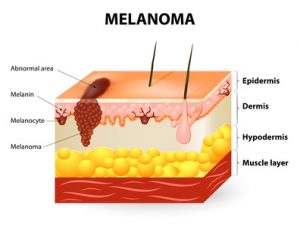
The risk directly associates with low levels of vitamin D. That is the conclusion of recent study published in the European Journal of Cancer.[1] The investigators measured the blood vitamin D levels of 137 subjects who had been diagnosed with melanoma. They collected the blood samples at the time of diagnosis of the disease. Another group of 99 healthy subjects served as the control group. The investigators collected the samples of the control group between October and April. The scientists then compared the blood collections of the melanoma group with those of the control group. They then determined whether vitamin D levels had an association with melanoma risk.
The study produced convincing results regarding vitamin D and melanoma risk.
The results were as follows:
- The controls (no melanoma) had vitamin D levels 50% higher than the melanoma group (27.8 ng/ml vs. 18 ng/ml).
- 66.2% of the melanoma group had vitamin D “deficiency,” compared to only 15.2% of the health controls. The scientists defined vitamin D deficiency as being equal to or less than 20 ng/ml. So, the melanoma group had more than four-times the risk of deficiency.
- The scientists defined vitamin D “sufficiency” as being equal to or greater than 30 ng/ml. They found that only 7.4% of melanoma patients were sufficient, compared to 37.4% of healthy controls. Hence, the melanoma group had about one-fifth the likelihood of having sufficient D levels.
More scientific analysis on vitamin D measurements vs. melanoma risk
The scientists then adjusted the data for possible confounding factors such as age, sex and body mass. Then, they performed an analysis that showed the following:
- First of all, the science demonstrated a significant inverse association with vitamin D sufficiency versus deficiency. Those who had sufficient levels had only 4% of the melanoma risk when compared to those who were deficient! Hence, this demonstrates that those with the lowest vitamin D levels (after adjusting for confounding factors) had 25-times the melanoma risk!
- And, vitamin D insufficiency vs. deficiency was significantly inversely associated with melanoma. Those who were insufficient had a definite advantage over those who were deficient. They had only 13% of the melanoma risk.
Now, this is the most important point about melanoma risk:
In addition, this research proves conclusively that sun deprivation is a major cause of melanoma. I say this because about 90% of serum vitamin D is produced by sun exposure to the skin.[2] So, the aforementioned research is really research on sun exposure. It shows that regular sun exposure leads to a profound reduction in melanoma risk. Therefore, Vitamin D levels are surrogate measurements for sun exposure in nearly every case.
Could sunlight increase health through photoproducts beyond vitamin D?
In conclusion: My new book, Embrace the Sun (coauthored by Dr. William Grant), notes that sun exposure provides more than vitamin D. It also provides other photoproducts such as nitric oxide, serotonin, endorphin, and brain-derived neurotropic factor (BDNF). All of these photoproducts are vital to human health. Could these photoproducts have a positive and protective effect against melanoma risk beyond vitamin D? And, vitamin D produced by sunlight may be superior to that given in pill form.
Finally, this research gives us one more reason to embrace the sun safely without burning. And who would have thought that safe sunlight could be one of the best prophylactics against melanoma risk?
Happy sunning!
The book is available at Amazon: https://www.amazon.com/Embrace-Sun-Marc-B-Sorenson/dp/069207600X/ref=sr_1_1?ie=UTF8&qid=1533923845&sr=8-1&keywords=embrace+the+sun+sorenson
1] Cattaruzza MS, Pisani D, Fidanza L, Gandini S, Marmo G, Narcisi A, Bartolazzi A, Carlesimo M. 25-Hydroxyvitamin D serum levels and melanoma risk: a case-control study and evidence synthesis of clinical epidemiological studies. Eur J Cancer Prev. 2018 Feb 12. [Epub ahead of print]
[2] Reichrath J. The challenge resulting from positive and negative effects of sun: how much solar UV exposure is appropriate to balance between risks of vitamin D deficiency and skin cancer? Prog Biophys Mol Biol 2006;92(1):9-16
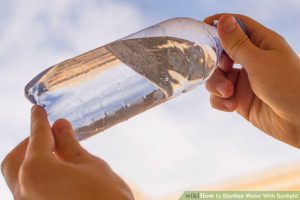 The best disinfectant is sunlight! Therefore, those who would frighten us away from the sun would do well to study its superlative disinfectant qualities, as I have. Why use a noxious chemical as a disinfectant, when the sunlight is waiting to be used? How do we know this? First of all, the German microbiologist Robert Koch, who isolated TB bacteria in 1882, showed that sunlight had disinfectant qualities; it destroyed the bacteria. In addition, even earlier, in 1877, other researchers discovered that sugar water left in the shade became cloudy, indicative of bacterial growth. But if exposed to sunlight, it remained clear.[1]
The best disinfectant is sunlight! Therefore, those who would frighten us away from the sun would do well to study its superlative disinfectant qualities, as I have. Why use a noxious chemical as a disinfectant, when the sunlight is waiting to be used? How do we know this? First of all, the German microbiologist Robert Koch, who isolated TB bacteria in 1882, showed that sunlight had disinfectant qualities; it destroyed the bacteria. In addition, even earlier, in 1877, other researchers discovered that sugar water left in the shade became cloudy, indicative of bacterial growth. But if exposed to sunlight, it remained clear.[1]
Disinfectant qualities of sunlight as a bactericide
Hence, radiation is a potent bactericide, or disinfectant. Dr. Kime, in his book, Sunlight Could Save Your Life, reviewed the results of research conducted between 1886 and 1909. Most noteworthy, it showed that the following bacteria were killed by ultraviolet light: Anthrax, plague, streptococci, tubercle bacillus, cholera, staphylococcus, colon bacillus and dysentery bacillus. It seems like sunlight was virtually forgotten with the advent of antibiotic drugs, but now the interest has returned.
Ultraviolet light therapy as a disinfectant for communicable diseases
While watching a newscast, I noticed the news ticker announcing, “Sunshine is the most effective anti-infection therapy.” But, is this really news? Dr. Kime cites several early studies on sunlight and infectious diseases, performed at about the same time as the advent of antibiotics. Reports in the scientific literature in the 1940s showed that sunlight killed infectious bacteria or viruses. Kime states …“a number of patients, having such various infections and diseases as blood poisoning, childbirth infections, peritonitis, viral pneumonia, mumps, and bronchial asthma were treated very successfully with ultraviolet light therapy to their blood.”[2], [3], [4], [5], [6], [7], [8], [9], [10], [11]
Do we need a natural disinfectant for superbugs?
The interest in blood irradiation for infectious diseases is now kindling new interest, due to the resistance of the “superbugs” to conventional antibiotic therapy. Especially relevant as an example of this interest is found in a scientific book chapter from 2017. It is entitled, Ultraviolet Irradiation of Blood: “The Cure That Time Forgot?”[12] The paper reviews the history of blood irradiation in the cure for infectious diseases. The author makes the following observation: “No resistance of microorganisms to UV irradiation has been reported, and multi-antibiotic resistant strains are as susceptible as their wild-type counterparts.” Consequently, the answer to the superbug dilemma is known, but will it be used? Perhaps not. It could cost the pharmaceutical industry a fortune if a better disinfectant were found.
In addition, Dr. Kime also cited research showing that UV therapy killed flu virus outside the body[13] and destroyed cancer-producing viruses.[14] He reported good results in his own practice in treating fungal infections with sunlight as a disinfectant. Other early research showed that all bacteria within eight feet of low-intensity UV lights were killed in ten minutes.[15]
Learning about disinfectant qualities of water in Mexico
A Mexican friend invited me to tour a bottled-water plant in a town called Juchipila. Interestingly, the water was exposed to UV as a disinfectant method, an inexpensive technique used in many countries. Sunlight also kills E. coli bacteria in twelve feet of seawater and in waste stabilization ponds.[16] The Sonicare electric-toothbrush company now sells a sanitizer based on UV. The brush, after use, is placed in the UV sanitizer, because the UV light kills millions of germs in 10 minutes.
Other disinfectant history
This piece of history is also especially relevant: Nursing pioneer Florence Nightingale insisted that hospitals for wounded troops be constructed to allow free entry of sunlight. So, how many hospitals today follow her brilliant advice? Due to short memories, hospital construction returned to the “dark ages” after the advent of antibiotic drugs. Consequently, in the USA, nosocomial infections (acquired in a hospital) occur two million times yearly and claim 90,000 lives.[17] [18] Meanwhile, the solution to most nosocomial infections is right outside the building, and no one will let it in! That solution is the disinfectant potential of unobstructed sunlight. At the very least, hospital rooms should be cleansed daily with UV of sufficient strength to kill surrounding bacteria. Probably, hospital profits would improve since they are businesses, after all.
Cost savings with the natural disinfectant: sunlight.
The University of Pennsylvania’s Center for Health Transformation states: “Nosocomial infections create terrific problems by prolonging hospital stays, occupying scarce bed-days, requiring a greater number of diagnoses, more medication, and a greater burden on doctors and nurses.” They estimate, “If a 300-bed hospital with 10,000 admissions yearly had a 5 percent annual infection rate (500 infections) with costs of $600 to $50,000 depending on the type of infection, the total costs for these infections could be as high as $7.6 million.”[19] So, multiply that by the number of hospitals. Imagine the savings if they let the light in! The patients in such rooms would also be happier and have a more positive outlook.
It makes sense to return to a sanitation method used successfully for millennia, especially given the reality of superbugs. The antibiotic drug revolution destroyed the successful and promising use of UV lamps and sun exposure as antiseptic, disinfectant, pro-immunity treatments. Antibiotics are failing. Therefore, the interest in UV must be renewed. We walk in darkness (or under artificial light) due to our obsession with the pursuit of new antibiotics, Hence, we fail to see the brilliant source of healing that awaits us outside.
The old-time disinfectant
Serendipitously, I happened on an article called Natural Alternatives to Bleach for Disinfecting.[20] It discussed pros and cons of such disinfectants as bleach, vinegar, hydrogen peroxide and yes, sunlight. In conclusion, the article stated that bleach could be dangerous. It could cause irritation to the eyes, mouth, lungs and skin, and could result in the release of toxic fumes. Therefore, this is not a good disinfectant!
The authors suggested three alternatives: vinegar, hydrogen peroxide, and sunlight, with sunlight being the safest disinfectant. The article states; “In fact, scientists have found that exposing a bottle of water to sun for 6 hours is an economical way to provide developing countries with safe drinking water. The disinfecting properties of sun can also be useful around the house. If you have an object you can move outside, the sun’s rays can help disinfect it. A stained piece of white laundry can be effectively brightened and disinfected by spraying the stain with lemon juice or vinegar, then hanging it in the sun.”
In addition, the authors also mentioned that exposing the armpits to the sun would kill odor-causing bacteria. There is little I (Sorenson) enjoy more than sunbathing with my hands behind my head and my armpits exposed to the sun. Lots of vitamin D, nitric oxide and endorphins produced, and therefore, I am more popular with my friends—without using deodorants!
Sunlight is a disinfectant for smelly socks!
Furthermore, research has shown that sunlight may be a good disinfectant for your socks and feet. Scientists tested socks contaminated with the fungus causing tinea pedis (“athlete’s foot”), a chronic skin disease. The objective of the research was “to evaluate the effectivity of sun exposure in reducing fungal contamination in used clothing.” Fifty-two socks, proven by fungal culture to be contaminated by patients with tinea pedis, were studied. The the researchers divided the samples into two groups: Group A underwent sun exposure for 3 consecutive days and Group B remained indoors. At the end of each day fungal cultures of the samples were performed.[21] As a result, the researchers reported that elimination of the fungal cultures was significant in the sun-exposure group, but not the indoor group. Sunlight is a great disinfectant, indeed!
Finally, I remember my childhood. I won’t forget how fresh the clothing (including the socks) smelled after my mother had laundered and hung it outside in full sunshine to dry. I expect that fungi or bacteria were eliminated, along with odor, which would have occurred in a dark place.
Let’s give the sun its proper place in our world. It may save our lives. More information can be found in my new book, Embrace the Sun, available at Amazon. https://www.amazon.com/Embrace-Sun-Marc-B-Sorenson/dp/069207600X/ref=sr_1_1?s=books&ie=UTF8&qid=1530822524&sr=1-1&keywords=embrace+the+sun+sorenson
[1] Downes, A. Researches on the effect of light upon bacteria and other organisms. Proc Roy Soc Med 1877;26:488. Cited in Kime, Z. Sunlight Could Save Your Life. World Health Publications, Penryn, CA 1980:126-30.
[2] Miley, G. The Knott technic of ultraviolet blood irradiation in acute pyogenic infections. New York J Med 1942;42:38.
[3] Miley, G. The Knott technic of ultraviolet blood irradiation in acute pyogenic infections. New York J Med 1942;42:38.
[4] Rebbeck, E. Ultraviolet irradiation of auto-transfused blood in the treatment of puerperal sepsis. Amer J Surg 1941;54:691
[5] Rebbeck, E. Ultraviolet irradiation of autotransfused blood in the treatment of postabortal sepsis. Amer J Surg 1942;55:476.
[6] Rebbeck, E. Ultraviolet irradiation of the blood in the treatment of escherichia coli septicemia. Arch Phys Ther 1943;24:158.
[7] Rebbeck, E. The Knott technic of ultraviolet blood irradiation as a control of infection in peritonitis. Amer J Gastroenterol 1943;10:1-26
[8] Hancock, V. Irradiated blood transfusions in the treatment of infections. Northwest Med 1934;33:200.
[9] Barrett, H. Five years experience with hemo-irradiation according to the Knott technic. Am J Surg 1943;61:42
[10] Barrett, H. The irradiation of auto-transfused blood by ultraviolet spectral energy: results of therapy in 110 cases. Med Clin N Amer 1940;24:723
[11] Miley, G. The present status of ultraviolet blood irradiation. Arch Phys Ther 1944;25:357.
[12] Hamblin, M. Ultraviolet Irradiation of Blood: “The Cure That Time Forgot”? Springer International Publishing AG 2017. Ahmad (ed.), Ultraviolet Light in Human Health, Diseases and Environment, Advances in Experimental Medicine and Biology 996, https://doi.org/10.1007/978-3-319-56017-5_25.
[13] Hollaender, A. The inactivating effect of monochromatic ultraviolet radiation on influenza virus. J Bact 1944;48:447.
[14] Heding LD, Schaller JP, Blakeslee JR, Olsen RG. Inactivation of tumor cell-associated feline oncornavirus for preparation of an infectious virus-free tumor cell immunogen. Cancer Res 1976;36:1647.
[15] Hart, D. Sterilization of the air in the operating room by special antibacterial radiant energy. J Thorac Cardiovasc Surg 1936;6:45.
[16] Gameson, A. Field studies on effect of daylight on mortality of coliform bacteria. Water Res 1967;1:279.
[17] Wang TT, Nestel FP, Bourdeau V, Nagai Y, Wang Q, Liao J, Tavera-Mendoza L, Lin R, Hanrahan JW, Mader S, White JH. Cutting edge: 1,25-dihydroxyvitamin D3 is a direct inducer of antimicrobial peptide gene expression. J Immunol 2004;173:2909-12.
[18]Avalos-bock, Steven rn, cic, and Valarie Campbell, MD. Knocking our nosocomial infections. Nursing 2017. Nursing: November 2004 – Volume 34 – Issue 11 – p 24–25
[19] University of Pennsylvania Center for Health Transformation 2006.
[20] http://homeguides.sfgate.com/natural-alternatives-bleach-disinfecting-79312.html
[21] Amichai B, Grunwald M, Davidovici B, Shemer A. Sun as a disinfectant. Isr Med Assoc J. 2014 Jul;16(7):431-3.
Breast cancer breakthrough.  By Marc Sorenson, EdD. Sunlight Institute
By Marc Sorenson, EdD. Sunlight Institute
Stunning Breast Cancer research shows that the highest vitamin D levels associate with an 80% reduction in risk.[1]
Is the breast cancer pandemic due to vitamin D deficiency?
First of all, as pointed out by the authors, numerous studies have shown an association between higher vitamin D level and breast cancer. But, other studies had not taken into consideration serum levels of vitamin D above 40 ng/ml. Why? Because that level had been considered the highest level needed for good health. Nevertheless, this study showed differences in breast cancer risk when comparing all serum vitamin D levels, and that made all the difference in the results. The research included 5,038 women .
.
A dose-response association between vitamin D levels and breast cancer
The most noteworthy finding can be summed up in the study conclusions: “Higher 25(OH)D concentrations were associated with a dose-response decrease in breast cancer risk with concentrations ≥60 ng/ml being most protective.” In other words, the higher the vitamin D levels, the greater was the protection.
This fact is especially relevant: serum vitamin D levels in 90% of the population are effected by sun exposure. Hence, sun exposure may be the operative factor in the comparisons. Sun exposure causes the body to produce nitric oxide, serotonin, endorphin and brain-derived neurotropic factor (BDNF). Most noteworthy is that all of these photoproducts are vital to human health.
Is something besides vitamin D at work in preventing breast cancer?
Therefore, it could be that these additional photoproducts added power to the vitamin D produced by the sun. Could the “holistic” sun be more important than vitamin D alone? Of course it is! Another study, little known, may hold the answer. An investigation from Iran, on the association between breast-cancer risk and vitamin D, showed that low vitamin D predicted only a slightly increased risk of the cancer. However, among women who totally covered themselves and thereby had no sun exposure, there was a 10-fold increase in the risk of the disease.[2] In other words, there was a 1,000% increase in breast cancer risk due to sun deficiency.
Summary:
Finally, consider this: With the holistic sun, we get the entire package, not just vitamin D. Embrace the Sun, and don’t burn.
For more on the study, see the press release put out by the Vitamin D Society: http://www.vitamindsociety.org/press_release.php?id=58
[1] Sharon L. McDonnell , Carole A. Baggerly, Christine B. French, Leo L. Baggerly, Cedric F. Garland, Edward D. Gorham, Bruce W. Hollis, Donald L. Trump, Joan M. Lappe. Breast cancer risk markedly lower with serum 25-hydroxyvitamin D concentrations ≥60 vs <20 ng/ml (150 vs 50 nmol/L): Pooled analysis of two randomized trials and a prospective cohort. PLoS One. 2018 Jun 15;13(6)
[2] Bidgoli SA, Azarshab H. Role of vitamin D deficiency and lack of sun exposure in the incidence of premenopausal breast cancer: a case control study in Sabzevar, Iran. Asian Pac J Cancer Prev. 2014;15(8):3391-6.
